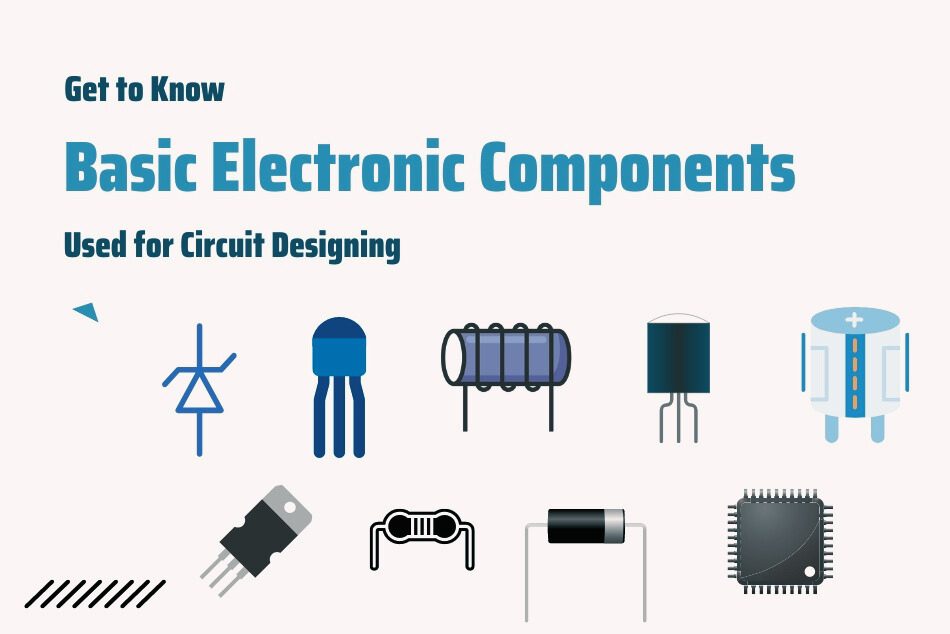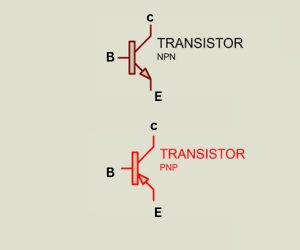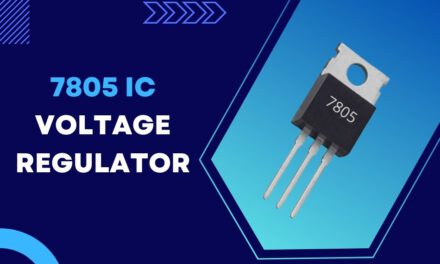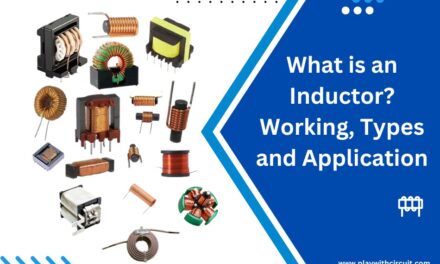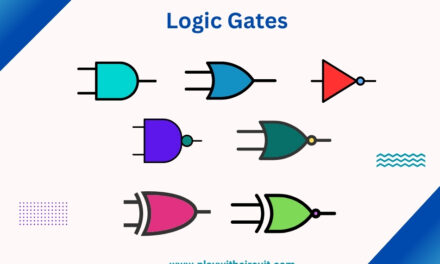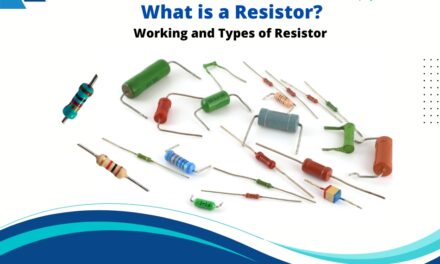Want to learn how to design a electronic circuit from scratch? Well, you should start by understanding the basic components that make up any electronic circuit. To build a circuit, you need to learn values, ratings & usage of these electronic components. In this tutorial, we’re going to give you a brief overview of common electronic components used for Circuit Designing.
Electronic Components are electronic devices or elements usually packaged in a discrete form with two or more connecting terminals.
When these components are connected together, usually by soldering to a printed circuit board (PCB), a useful electronic circuit is formed with a particular function (e.g. an amplifier, transreceiver, timing circuits, converters). Each electronic component in a circuit performs a particular task.
They are usually classified into three types:
- Active Electronic Components
- Passive Electronic Components
- Electromechanical Components
Active Electronic Components
An active component is an electronic component that rely on an external power source to control or modify electrical signals. one of the commonly used Active Components are Diodes, Transistors, ICs (Integrated Circuits), microcontrollers, etc.
Diodes
A diode is a semiconductor device that allows current to flow in one direction. It has two terminals, anode and cathode. Current will only flow when a positive voltage is applied to the anode side and negative voltage is applied to the cathode side.
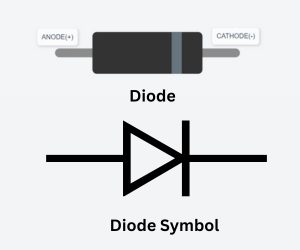
These are of different types:
- Light Emitting Diode: It converts the electrical energy into light energy.
- Zener Diode: It works as a voltage regulator that prevents the other semiconductor devices from momentary voltage pulses.
- Constant Current Diodes: It functions as a two terminal current limiter.
- Photodiode: It is used as high voltage rectifier, photo detector, radio frequency switch.
- Step recovery Diode: It is used for generation and shaping of high frequency pulses.
- Tunnel Diode: It is used as high-speed switch, with switching speed of few nano-seconds.
- Varactor diode: It acts like the variable capacitor and mostly used in radio frequency applications.
Learn More: What is Diode? Operating Modes, Types and Applications
Transistors
Transistor works as a control source in nearly every modern electronics circuit. It is like a switching device mainly used for switching and amplification. It consists of three terminals i.e. emitter, base, collector; which help to make a connection to an external circuit and carry the current.
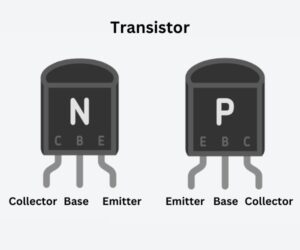
Integrated Circuits(ICs)
Integrated circuit (IC) is the heart and brain of circuit. It is a small chip of silicon, consists of thousand or millions of tiny components such as transistor, diodes and other elements.
These can be classified as linear and nonlinear ICs depending on its application. They can function as an oscillator, amplifiers, timer, counter, etc.
They are widely used in modern electronic devices such as laptops, cell phones and so on.
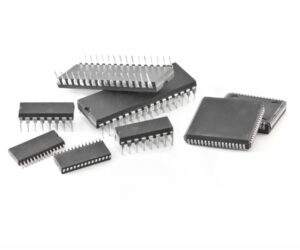
Passive Electronic Components
All circuit boards inevitably has some passive electronic components. They do not generate power, but instead dissipate or store it. They’re used for everything from power conversion to power stability, filtering, and configuring ICs.
The three basic passive electronic components are resistors, capacitors, and inductors labeled in circuit diagrams as Rs, Cs and Is, respectively. All three of these components limit the flow of electrical current through a circuit but in very different ways.
Resistors
The resistor opposes the flow of electrical current through it. The amount of opposition to the flow of current is called the resistance which is a measure of how easily or how difficult electrons can flow through a particular path in an electrical circuit. It is expressed in Ohms (Ω).
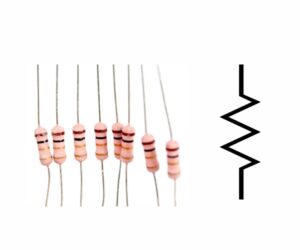
Resistors are used to control the currents flowing in different areas of a circuit and to manage voltage levels at different points thus producing voltage drops. When a voltage is applied across a resistor, current flows through as related by Ohm’s law.

Where: R is the resistance, V is the voltage across the resistor, and I is the current flowing through the resistor.
Resistors have many uses in circuits. one of the more common uses of resistors include Potential divider, Current limiting, Impedance matching, Op-amp gain and feedback.
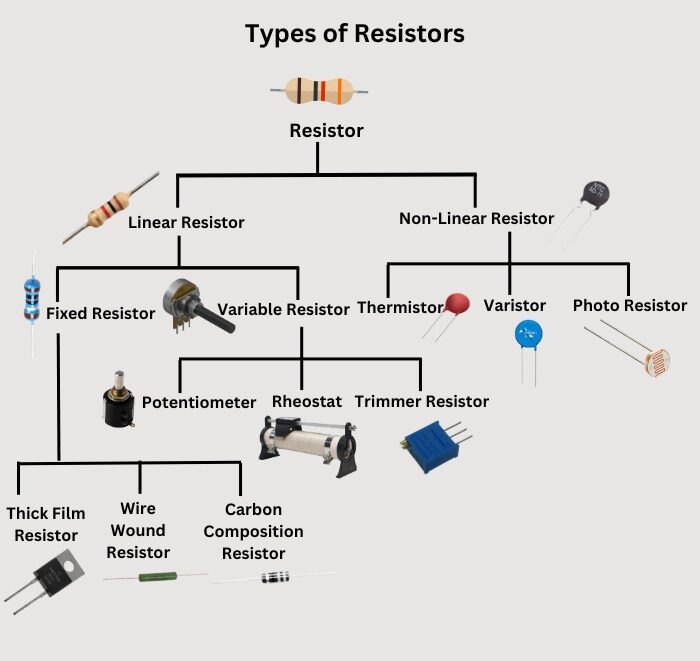
Learn More: What is a Resistor? Working and Types of Resistor
Capacitors
A capacitor is another primary type of physical component used in electronic circuits. It is made up of two or more conducting plates separated by a dielectric material.
A capacitor stores its energy electrostatically as a charge across its plates. Its ability to store charge is referred to as its capacitance, measured in Farads (F).
Capacitance, “C” is the property of a capacitor which opposes any changes in the voltage across it.
Direct current (DC) cannot pass through a capacitor because electrons cannot flow through the dielectric. However, it passes alternating current (AC) because an alternating voltage causes the capacitor to repeatedly charge and discharge, storing and releasing energy. Thus, one of the major uses of capacitors is to pass AC and block DC, a function called ‘AC coupling’.

Learn More: Understanding Capacitors and their working
Inductors
Inductors are coil-like structures used in most power electronic circuits to store energy in the form of magnetic energy. They are mostly used to control the electric spikes by storing energy temporarily in an electromagnetic field and then releasing it back into the circuit. They are used in power converters, filters, tuned circuits, etc.

The S.I. unit of inductance is Henry (H) and when we measure magnetic circuits, it is equivalent to weber/ampere. It is denoted by the symbol L
Depending on the type of material used inductors can be classified as follows:
- Iron Core Inductor
- Air Core Inductor
- Iron Powder Inductor
- Ferrite Core Inductor which is divided into Soft Ferrite and Hard Ferrite
Learn More: What is an Inductor?
Electromechanical Components
Electromechanical components uses an electrical signal to cause some kind of mechanical change, such as a motor turning. These usually use an electrical current to create a magnetic field which causes a physical movement. Different types of electromechanical components include Switches, Relays, Connectors, Motors & Controls.
In this article, we have covered almost all the basic components needed for circuit designing. We consider that the information given in this article is helpful for you to a better understanding of electronic components.
FAQ’S
What are the components used in circuit design?
We use various components, including resistors, capacitors, inductors, diodes, transistors, and integrated circuits (ICs) in circuit design.
What is the difference between active and passive components?
The most significant difference between active components and passive components is that active components can supply power to an electronic circuit, whereas passive components can only absorb the power in the circuit.
What are the classification of electronic components?
Electronic components can be classified into several categories based on their functions and properties. They are classified into Active components, Passive components and electromechanical components.
